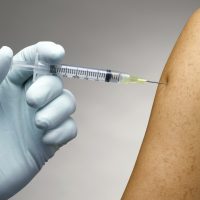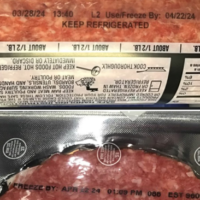
 DigitalVision/Thinkstock(NEW YORK) — As the deadly Ebola virus rises again in central Africa, health officials have decided to try a different approach to fight back.
DigitalVision/Thinkstock(NEW YORK) — As the deadly Ebola virus rises again in central Africa, health officials have decided to try a different approach to fight back.
At least 19 deaths have been tied to the current outbreak of Ebola virus in the Democratic Republic of the Congo’s Bikoro Health Zone, Equateur Province. There were 39 confirmed and suspected cases identified between April 4 and May 13, according to the World Health Organization.
The WHO has received approval to use an experimental Ebola vaccine, using a “ring vaccination” approach, around the epicenter of the oubreak in the Congo.
“Working with partners and responding early and in a coordinated way will be vital to containing this deadly disease,” Dr. Peter Salama, deputy director-general of emergency preparedness and response for the World Health Organization said in a statement.
Here is more information about Ebola and the experimental vaccine the WHO plans to employ.
How is Ebola transmitted to people?
Outbreaks of Ebola virus appear to begin when a human comes into contact with an infected animal or its body fluids. Subsequent person-to-person transmission happens after physical contact with the body fluids of a living or deceased patient.
What are the current treatments for Ebola?
The mainstay of treatment for Ebola virus involves supportive care to maintain adequate organ function, giving the immune system time to mobilize and eliminate the infection.
Several experimental antiviral therapies were used to treat patients who contracted the virus during the 2014 to 2016 outbreak in West Africa, but it’s not clear how effective those drugs were and they are in very short supply.
Why this vaccine?
This vaccine was developed to help protect people who have not yet been infected with Ebola. It has been proven safe and effective in human trials, but it has not received a license, so it’s still considered experimental.
In the past, U.S. Food and Drug Administration granted the vaccine what is known as a breakthrough therapy designation — a status reserved for medicines designed to treat serious or life-threatening illnesses.
The vaccine, which is referred to as both VSV ZEBOV and V920, was developed by Merck and has demonstrated the ability to cut the risk of infection in human trials.
In September 2014, WHO identified both VSV and the ChAd3 vaccine as the most advanced candidates for use in the West African outbreak, mainly because both appeared to protect people after a single inoculation.
More than 3,500 people were vaccinated with VSV in 2015, as part of a large trial at the end of Ebola outbreak in Guinea.
Why is this approach different?
This vaccine was designed for use in a so-called “ring vaccination” approach, a strategy used in 1977 to control smallpox. The idea is to vaccinate people who know someone who has been infected and the people who know those people, in an expanding “ring” around the infections.
So far, 393 people have been identified as part of the “ring” around people who are known or suspected to have been infected in the Congo. There is enough vaccine to cover those identified and many more; the WHO has a stockpile of 4,300 doses in Geneva and 300,000 doses in the U.S.
This article was written by Satyam Nayak, M.D., M.P.H., an assistant professor and clinical hospitalist at U.T. Southwestern, who works in the ABC News Medical Unit.
Copyright © 2018, ABC Radio. All rights reserved.















